Silky Mascarpone Orange Posset
Orange posset is the stuff that dreams are made of. Creamy and luxurious, rich yet refreshing, it’s the easiest, most delectable dessert you’ve never heard of. This 5-ingredient orange posset uses citrus juice as the thickening agent to strike the perfect balance between a pudding and a custard. It’s a stunner that’ll wow you and anyone else who tries it.
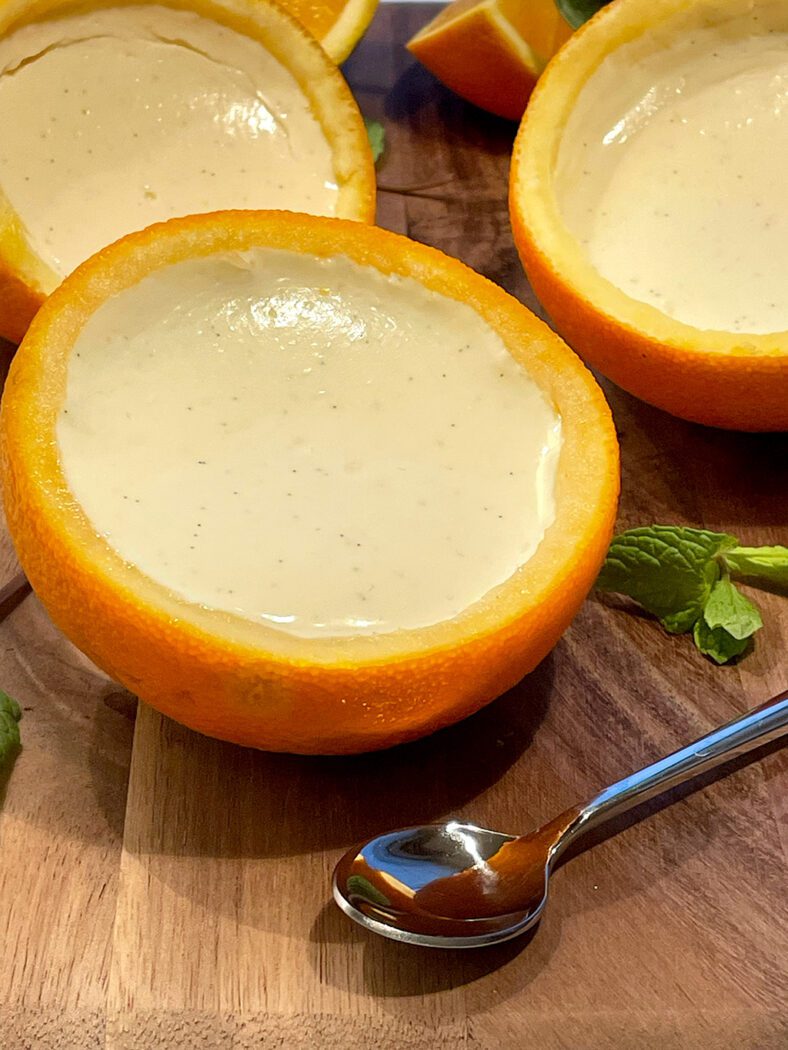
What Is a Posset Anyway?
The posset is properly retro. So old-school, in fact, that it has actually been around since the days of Shakespeare. A classic British dessert, the posset was originally a hot beverage made with milk, which curdled with the addition of alcohol, such as wine or ale. It was then typically spiced with nutmeg or cinnamon.
Today, possets are a cold dessert. Commonly made with English double cream, possets are much thicker than the hot beverage of yesteryear. The primary thickening agent is citrus juice, typically lemon, whose high acidity causes the proteins in the cream to bond with each other.
But if you’ve got oranges on hand, their juice is the ideal addition. Simply put, when life gives you oranges, make possets.

This orange posset uses mascarpone instead of double cream. Here in Belgium, double cream isn’t widely available. Luckily, though, mascarpone is an excellent substitute for heavy cream. A super silky Italian cream cheese, mascarpone’s milk-fat percentage is high – up to the 60-75% range, which is what you want for a posset.
How to Serve an Orange Posset
Not unlike a custard or a pudding, you can serve orange posset in a variety of dishes, dessert glasses, ramekins, or my favorite way – in the hollowed-out rinds of the oranges themselves. There’s just something incredibly satisfying, almost primeval, about eating food directly out of its natural vessel!
A small portion is ideal because of the posset’s exceptionally rich texture and mouthfeel.
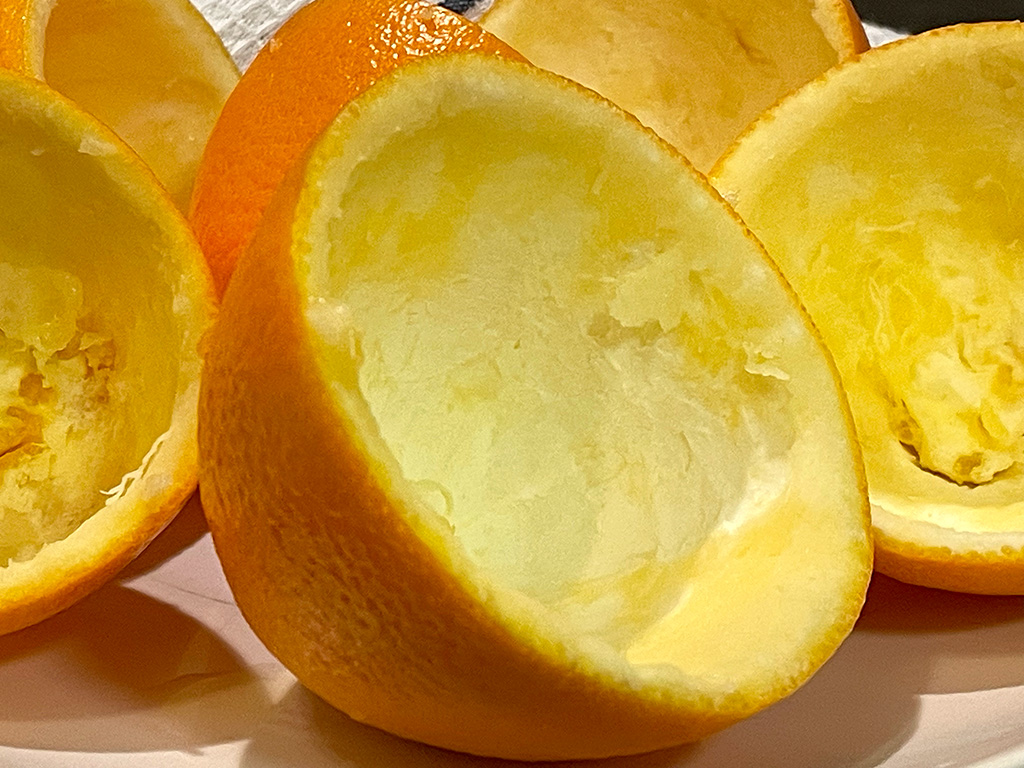
What Does an Orange Posset Consist of?
The posset is shockingly simple. In its most basic form, the posset contains just three ingredients:
- Mascarpone
- Sugar for texture and sweetness
- Citrus juice as a thickening and flavor agent
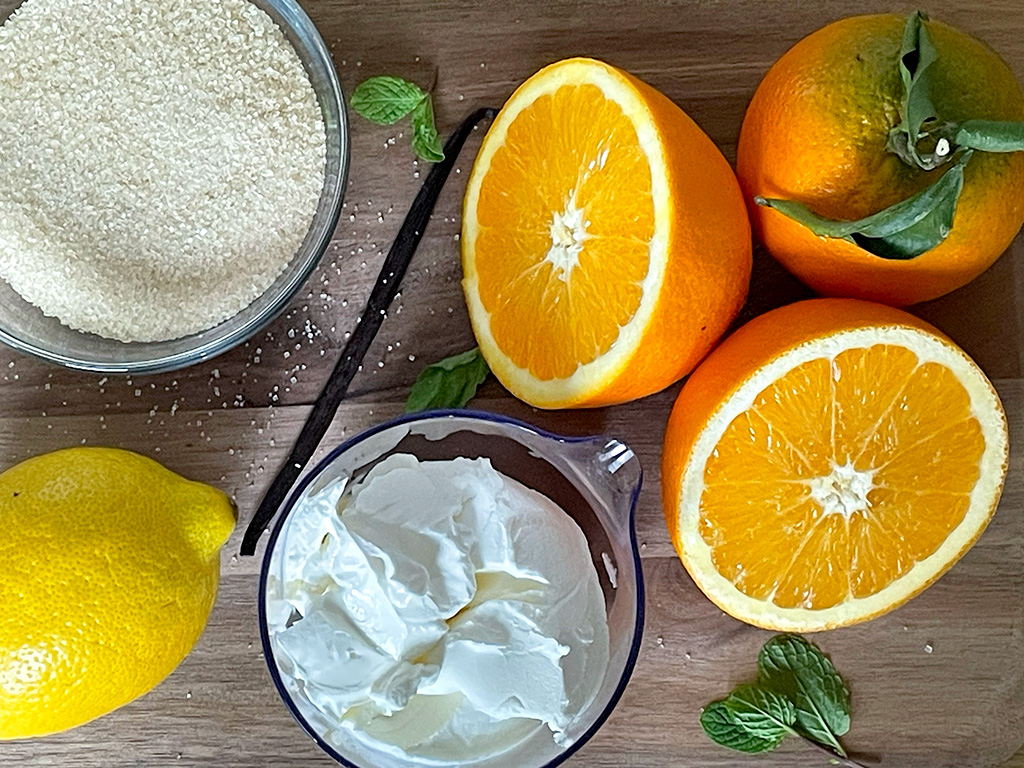
The orange posset from this recipe ups the stakes ever so slightly, adding fresh vanilla specks and fresh-squeezed orange juice for a scandalously sumptuous yet refreshing treat.
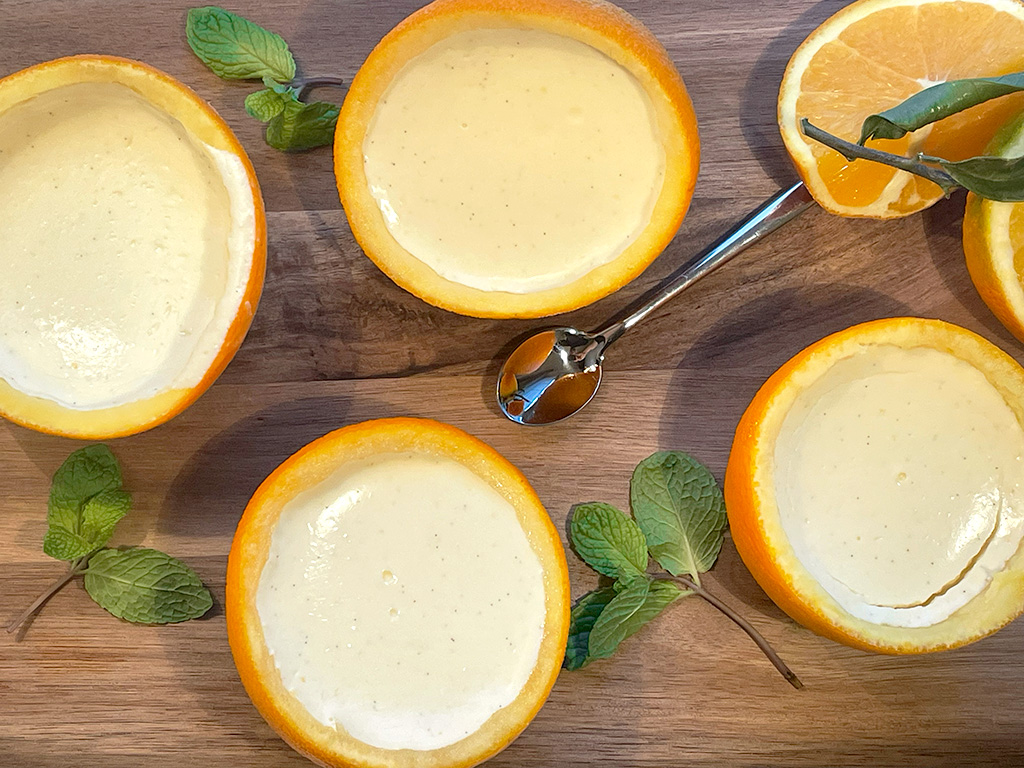
How Is It Different from Custard or Panna Cotta?
Possets, custard, and panna cotta each have specific setting agents and cooking methods. Custard relies on egg protein to thicken, while panna cotta uses gelatin. Possets, on the other hand, rely on the acidity from citrus juice, which causes the proteins in the cream to bond with each other.
The posset mixture needs to be heated and, once the acid-induced coagulation has occurred, chilled in the refrigerator. As it cools, the bonded proteins solidify further, setting the posset into a thick, creamy dessert.
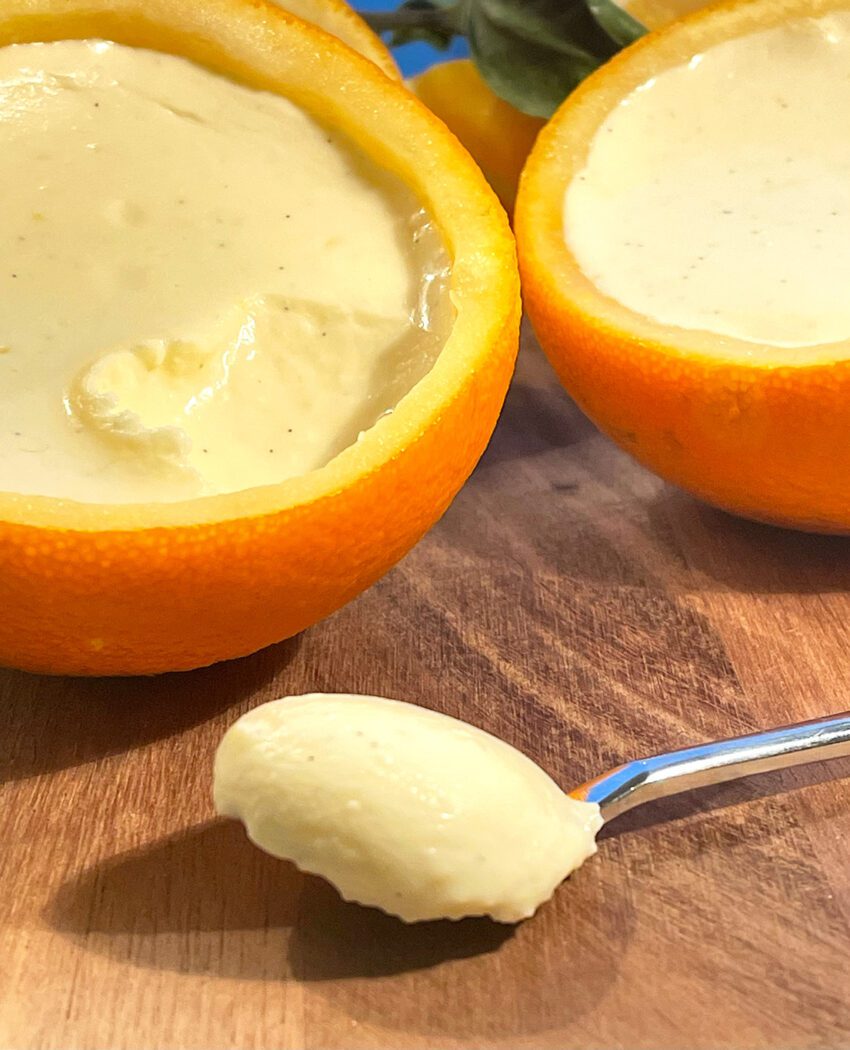
How to Make a Mascarpone Orange Posset
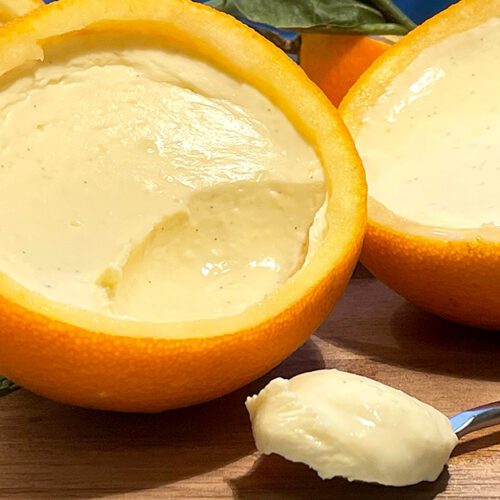
Silky Mascarpone Orange Posset
Ingredients
- 500 grams (2 cups) Mascarpone
- 125 grams (½ cup) Sugar
- 1 Whole orange zested equivalent to 1 tablespoon
- 1 Whole orange juiced (approx. 80ml or ⅓ cup)
- ½ Lemon juiced (approx. 30ml or 2 tablespoons)
- Vanilla bean 5 cm or 2 inch-sized piece with the specks scraped out
Instructions
- Boil mascarapone, sugar, and orange zest. In a small pot, over medium-low to medium heat, bring the mascarpone, sugar, and orange zest to a boil, stirring until the sugar dissolves. Boil for 3-4 minutes, stirring continuously so the mascarpone doesn’t burn. Keep a close eye on it and adjust the heat as needed so it doesn’t boil over. (see notes)
- Stir in the vanilla bean specks. (see notes)
- Remove from heat and stir in citrus juice. Remove the mixture from the heat. Stir in both the lemon and orange juice and let cool for 5 minutes.
- Strain mixture. Stir the mixture again and pour it through a sieve into another small pot to strain out any citrus pulp and zest. (see notes)
- Pour the mixture into your serving dishes of choice.
- Chill the possets. Place the possets in the refrigerator and let chill for a minimum of two hours, but ideally overnight.
Notes
Frequently Asked Questions
Can I use other fruits instead of oranges?
Absolutely. Any citrus fruit should work, as it’s the acid which helps the mixture thicken. Lemon, blood oranges, lime, and grapefruit are all possible variations. To date, I’ve only tested orange, but do experiment and let me know!
How long will a posset last in the fridge?
Much like custards and puddings, possets that have been cooked properly should last between 3 to 4 days in the refrigerator. Mine never have, though, because I can’t keep my hands off of them!
If I’m using double cream instead of mascarpone, how much should I use?
500 ml or 2 cups.
I can’t find mascarpone or double cream. Will heavy cream work?
It depends on the milk-fat percentage of the heavy cream. From personal experience, you want at least 40% milk fat. I have used crème fraîche at 40% milk fat with varying degrees of success. For me, as English double cream isn’t widely available in Belgium, mascarpone has yielded the best results.
What kind of sugar should I use?
In this recipe, I used pure cane sugar. I’ve also used white, granulated sugar with the same results.